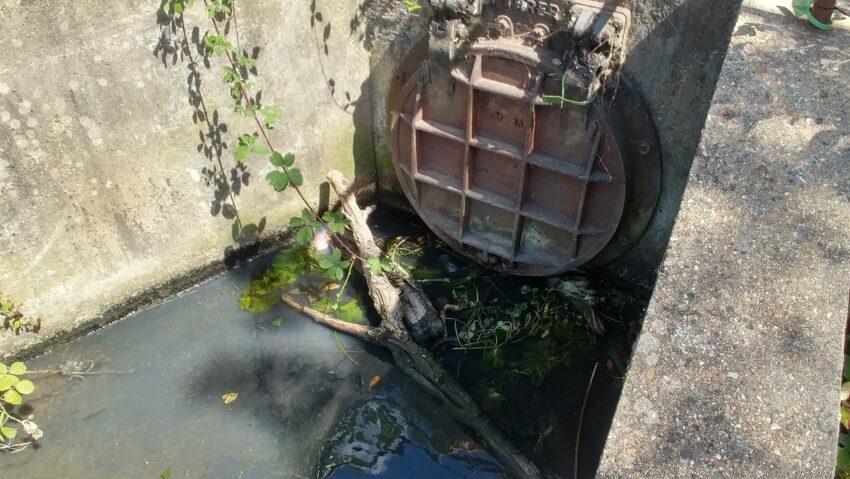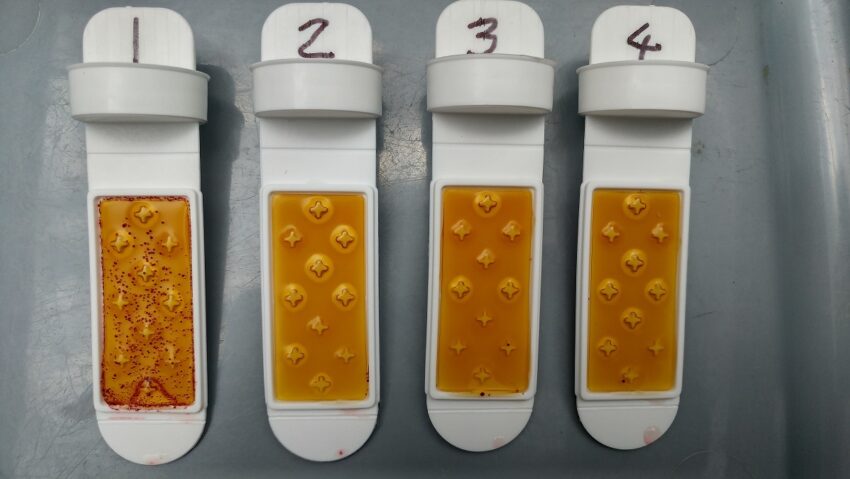A Thames currently fit for swimming
In the August 2018 issue of Outdoor Swimmer magazine I wrote about some work we’re doing with Theo Thomas from the London Waterkeeper, a charity with a vision of a Thames fit for swimming. Back in June, we collected water samples from a place I frequently swim in the river, about half a kilometre upstream from Teddington Lock. We tested the samples for e-coli bacteria and found only 50 colonies per 100ml of water in one sample, while the others came up with none.
Officially recognised bathing waters (primarily beaches) are tested weekly through the summer and the samples need to show fewer than 500 colonies of e-coli bacteria per 100ml for the quality to be judged as excellent.
So, these results were good news for the Thames and for my wild and free swimming.
Our plan was to test again after we had some rain, as we know that rain can cause storm drains to overflow and may result in sewage entering the water. However, a month passed and we’ve had no rain.
Treated effluent is pumped constantly into the Thames from sewage works along its length. Although this sounds unpleasant, it’s mostly not a problem for water users as the effluent has been treated to a high standard and it is quickly diluted and dispersed in the river. In addition, sunlight is a natural disinfectant. But during this long dry spell, the flow and volume of water in the Thames has dropped significantly below its usual summer levels. This means the dilution benefit could be reduced. The long dry spell therefore gave us an opportunity to test again to see if there has been an impact on water quality.

Outfall opposite Trowlock Island – avoid swimming close to one of these
Visually, water in the Thames is looking amazing at the moment. The water is often turbid due to a high silt load (this is entirely natural and not harmful to swimmers) but is now clearer than I’ve ever seen it. The slow flow has allowed much of the silt to settle. In addition, this year there are lots of water lilies growing near the banks on this stretch, which is an indicator of healthy water and again something that I haven’t seen before. But you can’t see bacteria.
Anyway, on 23 July we tested again and happily found just 150 colonies of e-coli per 100ml. Although this is higher than last time, we haven’t done enough testing to know if this is a statistically significant difference, it is still comfortably below the 500 colonies per 100ml benchmark for excellent water quality, so all good to continue swimming.
There’s just one note of caution. About a kilometre further upstream there is an outfall. We don’t know yet (but we’re investigating) what this outfall connects to, but we did take a water sample close to where it discharges. This came back with something like 10,000 colonies of e-coli indicating contamination with human sewage. As mentioned above, this is quickly diluted in the river and so despite being unsavoury to think about is not particularly hazardous for swimmers, provided they don’t go too close.
This suggests the following:
- During long dry spells, the stretch of the Thames near Teddington Lock is suitable for swimming from a water quality point of view.
- By extension, this implies that the water quality is likely to be excellent further upstream where it has received fewer discharges.
- Even water that is judged as excellent may have some e-coli bacteria and you cannot remove the risk of getting ill completely, but take precautions such as washing hands before eating and don’t swim if you have open cuts.
- Look out for outfalls (see picture). Even if these don’t appear to be flowing, the water around them may be more contaminated than elsewhere. Avoid swimming near them.

Water quality test results. The paddles are treated to allow growth of e-coli colonies. Paddle 1 (from sample collected next to the outfall) is covered with red dots indicating around 10,000 colonies of e-coli per 100ml of water. The others show just a few dots, indicating around 150 colonies per 100ml and therefore excellent water quality.








